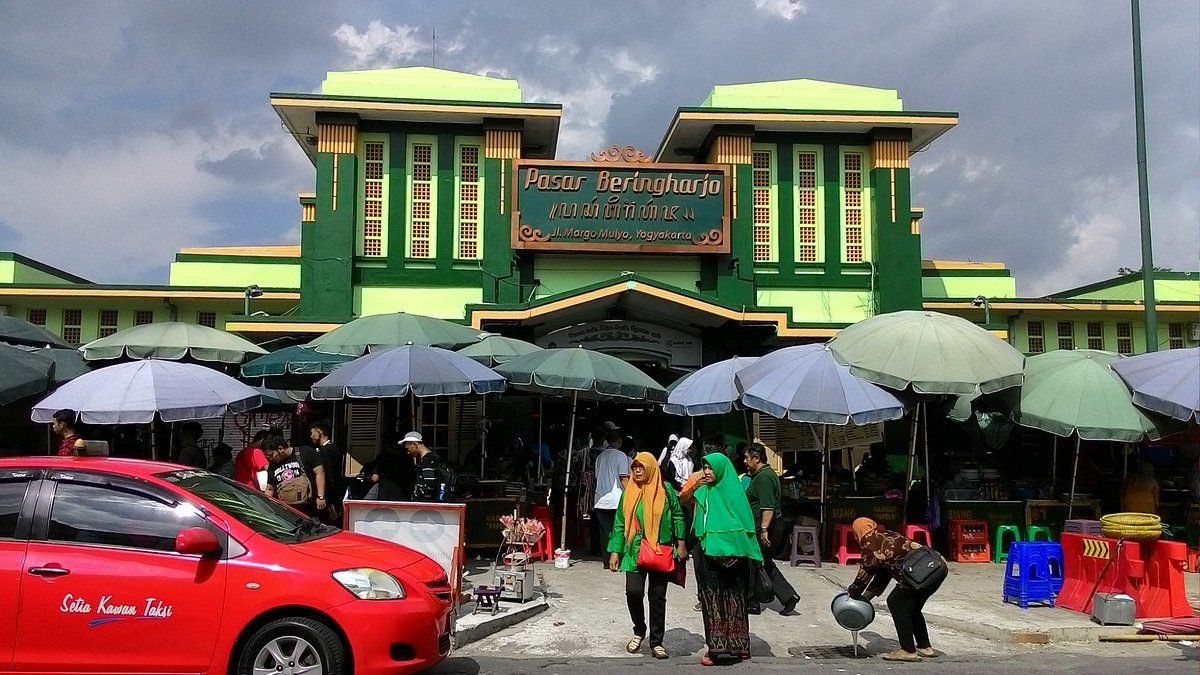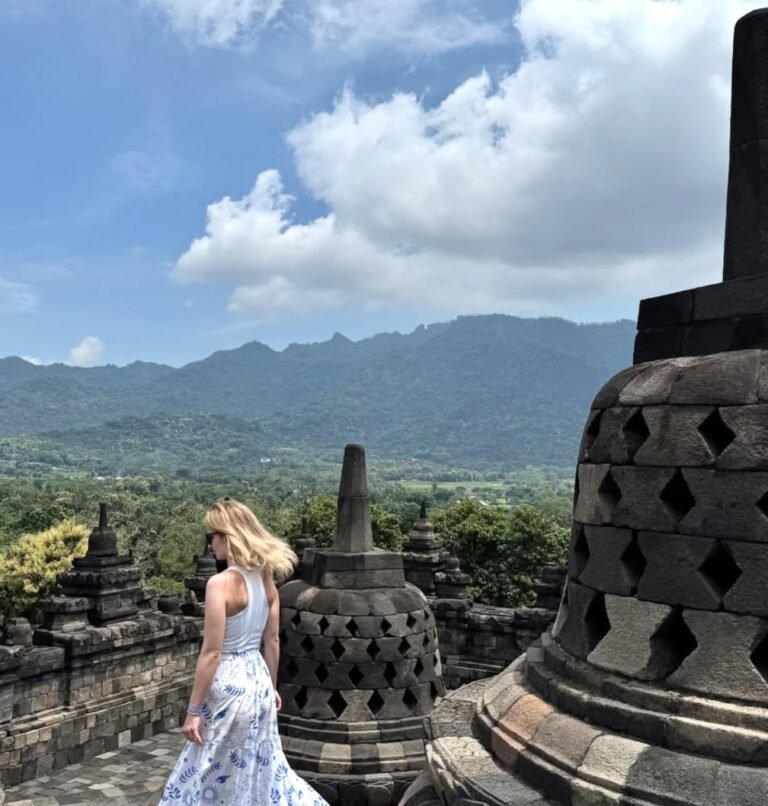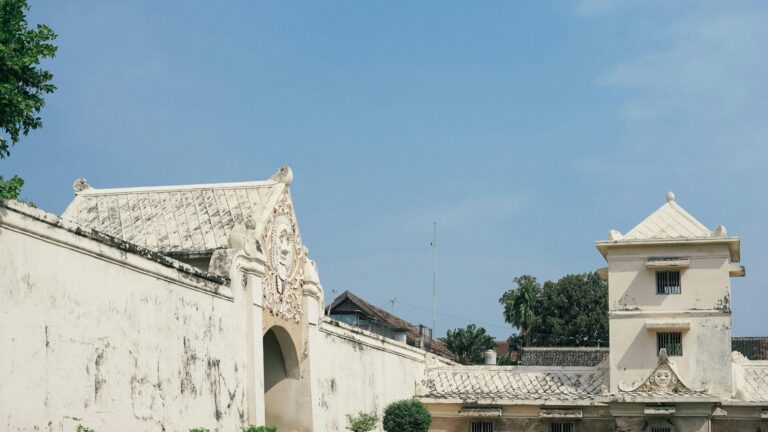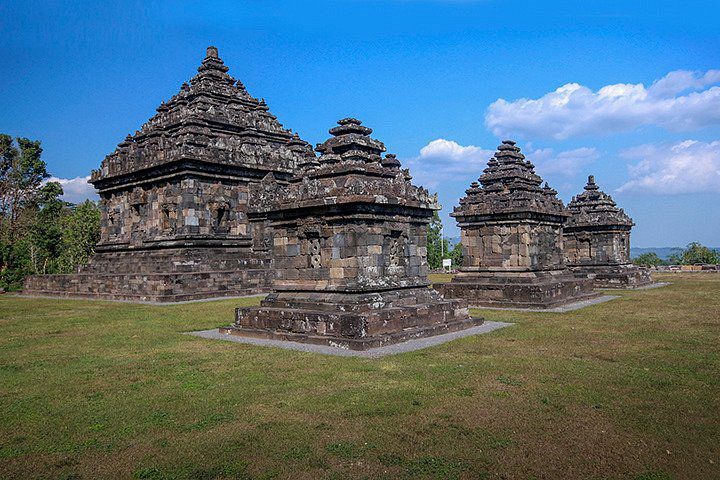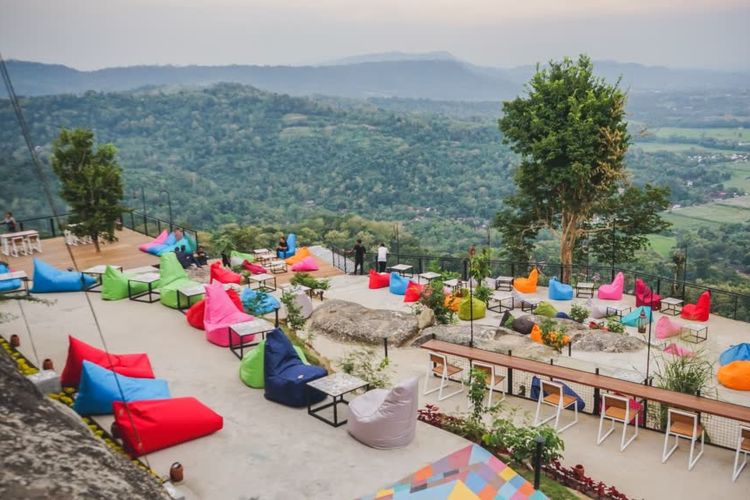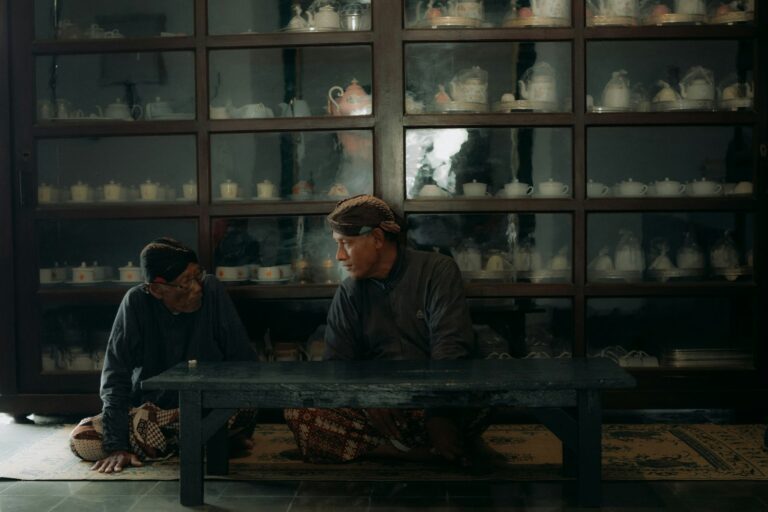One of the must-visit shopping destinations in Yogyakarta is Beringharjo Market Yogyakarta. This market is the oldest market in Yogyakarta.
There are many tourist destinations that you can visit while on vacation in Yogyakarta. You can visit culinary tours, historical tours, cultural tours, nature tours, and even shopping tours.
Speaking of shopping, there is one shopping destination in Yogyakarta that is always crowded with tourists, Beringharjo Market. You can find a variety of items that can be used as souvenirs at Beringharjo Market Yogyakarta.
Interested in visiting Beringharjo Market Yogyakarta? Check out the information about this market first.
Beringharjo Market Yogyakarta
The word beringharjo means a forest of banyan trees that is expected to provide prosperity for the people of Yogyakarta. The name beringharjo comes from the words “bering” and “harjo”.
This market used to be a forest known as Paberingan Forest or known as “bering”. While the word “harjo” comes from the word raharjo which means prosperous. This means that this market is expected to be a good place and make people prosperous.
There are also those who interpret the name beringharjo as coming from the word “jember” which means wet or humid because this area used to be a swampy area. Then the word “ring” which means dry. And the last is the word “harjo” which means beautiful and clean.
Based on this definition, Beringharjo means an area that was originally wet and humid then became dry and clean.
Beringharjo Market is located at Jalan Margo Mulyo No.16, Ngupasan, Gondomanan District, Yogyakarta City, Yogyakarta Special Region. The market is located about 500 meters north of the Palace on the east side of the Philosophical Axis.
Pasar Beringharjo was founded by Sri Sultan Hamengku Buwono I. The market was registered as a national cultural heritage in 2011 in Ministerial Decree NoPM.89/PW.007/MKP/2011.
In traditional Javanese concept, the capital should have a market located to the northeast of the kraton. The market shows the king’s ability to provide prosperity for his people.
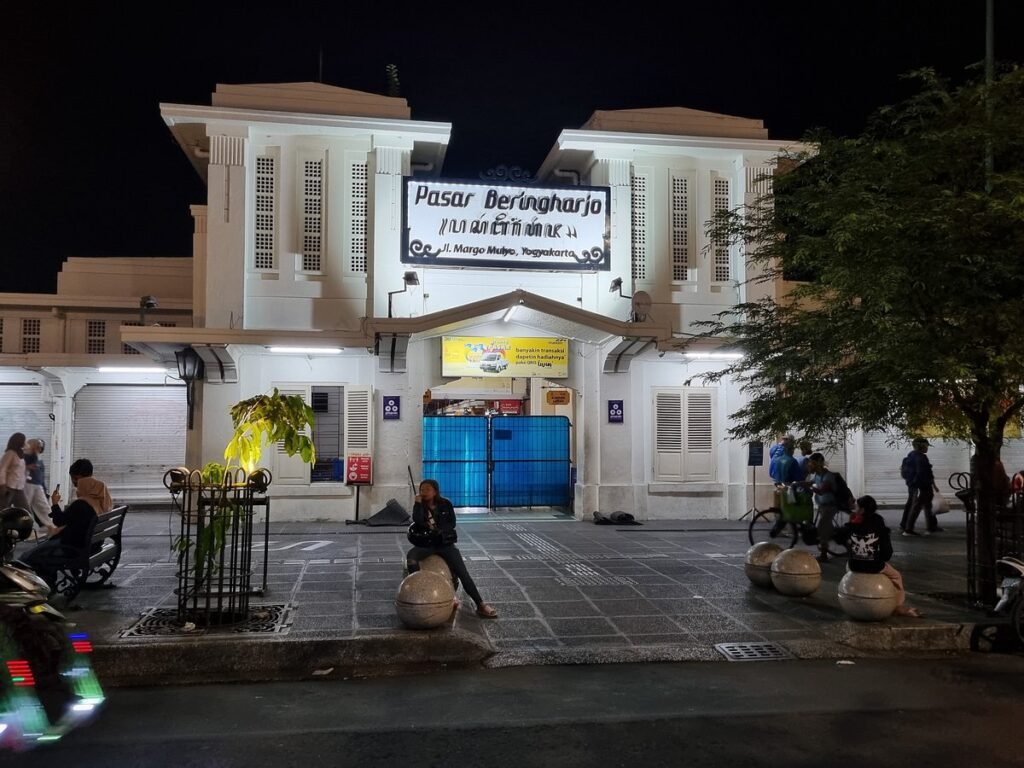
History of Beringharjo Market Yogyakarta
In the beginning, the area where Pasar Beringharjo stands today was a banyan forest. Then, not long after the Yogyakarta Palace was established in 1758, this banyan forest area was used as a place of economic transactions by the citizens of Yogyakarta and the surrounding communities.
A few hundred years later, on March 24, 1925, the Palace commissioned the Nederlandsch Indisch Beton Maatschappij (Dutch East Indies Concrete Company) to build the market stalls. A total of 11 market stalls were completed by the end of August 1925 and more stalls followed in stages.
The name Beringharjo was only given during the leadership of Sri Sultan Hamengku Buwono VIII on March 24, 1925. Sri Sultan Hamengku Buwono VIII ordered all institutions in the Sultanate of Yogyakarta to use Javanese.
The name Beringharjo was chosen because it means that the area was originally a banyan forest (bering) which was expected to provide prosperity (harjo). The banyan tree itself is considered a symbol of greatness and protection for many people.
Beringharjo Market Yogyakarta was built using only simple wooden stalls. The market was later renovated by the palace in the early 20th century. The structure of the market was changed to concrete with a facade that has an art deco architectural style.
Although the form of the market has changed, the position and meaning in the Philosophical Axis planning scheme remains. In addition, the function of the market is also maintained with traditional foods, fabrics, and herbs sold at Pasar Beringharjo to this day. The market is an important place for textile trading and Batik Ninik (special batik from the palace) and Lurik (woven fabric from the palace) are also sold in the market.
Pasar Beringharjo has historical and philosophical value with the Yogyakarta Palace because it has passed through three phases, namely the royal period, colonization, and independence. The construction of Beringharjo Market Yogyakarta is included in the design of the Yogyakarta Sultanate’s urban planning pattern called Catur Tunggal.
The Catur Tunggal urban planning pattern includes four things, namely the palace as the center of government, the square as a public space, the mosque as a place of worship, and the market as the center of economic transactions.
Building Structure of Beringharjo Market Yogyakarta
Beringharjo Market has a unique building. The uniqueness of this market building can be seen from the interior of the building which combines colonial architecture with traditional Javanese architecture.
Pasar Beringharjo consists of two separate buildings, namely the building on the west side and the building on the east side. The main building on the west side consists of two floors. The second building on the east side consists of three floors.
The main entrance of Pasar Beringharjo is on the west side and faces Malioboro Street. This entrance has a typical colonial touch with the inscription Pasar Beringharjo written in Latin script and Javanese script.
On the right and left side of the main door, there are two rooms. The room with a size of 2.5 x 3.5 meters is used as the market management office.
The main entrance of Pasar Beringharjo is directly connected to the main street of the market which is built straight from west to east. The width itself is about 2 meters with open stalls on the right and left sides. Apart from the main entrance, there are also other doors in the north, east, and south with smaller sizes than the main entrance of the market.
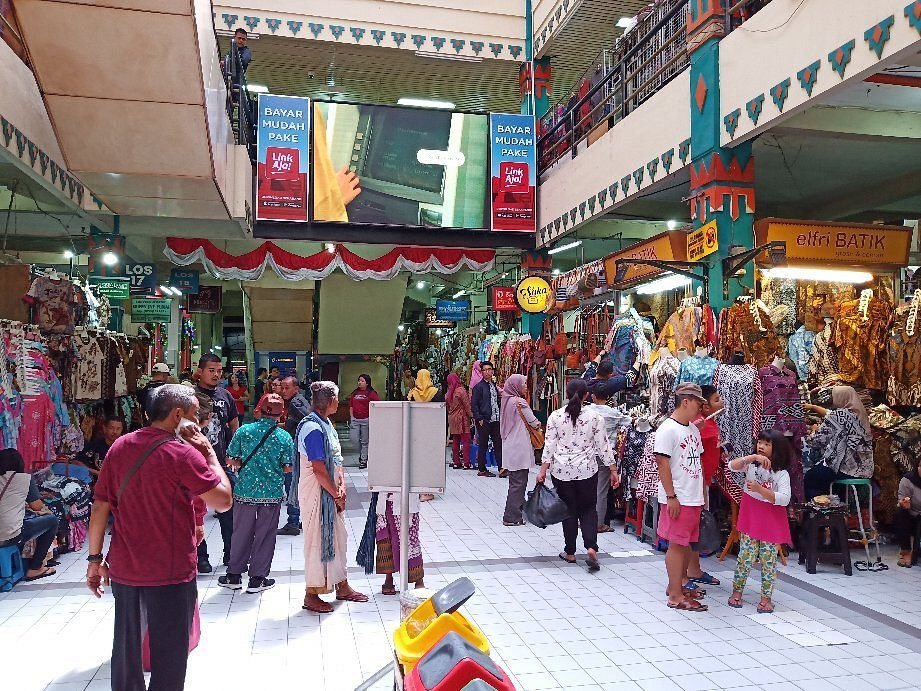
Products that Sell in Beringharjo Market Yogyakarta
Beringharjo Market Yogyakarta sells a wide variety of goods typical of Yogyakarta. Therefore, it’s no wonder that this market is always a destination for tourists outside of Yogyakarta to buy souvenirs.
What can you buy at Beringharjo Market Yogayakarta? Here are some of the items that are sold in this market.
1. Batik
When vacationing in Yogyakarta, it would certainly be lacking if you don’t buy batik as souvenirs. Beringharjo Market Yogyakarta has various types of batik. You can find cloth batik, batik that has been made into clothes, batik with cotton material, and even batik with silk material.
For those of you who want to buy cloth batik, you can find this batik stall on the west side of the market to the north. As for those who want to buy a collection of batik clothes, you can find them almost all over the west side of the market.
Apart from batik, the western market stalls also offer surjan shirts, blangkon, and woven sarongs. In addition, there are also sandals and bags that you can find around the escalator of the west side market.
2. Herbs and Spices
If you want to buy spices, you can go to the eastern market. The second floor of the eastern market is the sales center for Javanese herbal ingredients and spices.
Examples of herbs sold in this market are turmeric, which is used to make sour turmeric, and temulawak, which can be used to make very bitter herbs.
There are also other spices such as ginger (used as a ronde drink or burnt, boiled and mixed with rock sugar) and wood (used to enrich the flavor of wedang ginger drinks, coffee, tea and sometimes used as a substitute for cocoa powder in cappuccinos).
3. Antiques
For those of you who enjoy collecting antiques, you can also find antiques at Beringharjo Market Yogyakarta. The antique sales center is located on the 3rd floor of the eastern part of the market.
Some of the antiques that you can find in this market are old typewriters or helmets made in the 60s with the front part having mica as far as the nose.
In addition, there are also some quality second-hand items sold in this market. For example, imported second-hand goods such as shoes, bags, and clothes are sold at a lower price, but the quality is still good.
4. Traditional Snacks
If you want to hunt for Yogyakarta’s culinary delights, you can also find them at Beringharjo Market Yogyakarta. At this market, you can try a wide variety of Yogyakarta’s traditional market snacks.
Some examples of market snacks sold in this market are:
- Kue kipo, a specialty of Kotagede made from glutinous rice flour and unti coconut cooked by burning in a clay pan.
- Mendut, a round-shaped red and green dish doused with coconut milk.
- Mega mendhung, a food made from blue and white hunkue.
- Legomoro, a sticky rice dish filled with minced meat. This food is similar to lemper wrapped in banana leaves and steamed.
- Pecel urap, contains a variety of vegetables such as spinach, bean sprouts, and mustard greens doused with peanut sauce. You can find this dish in front of Beringharjo Market Yogyakarta.
Closing
That’s a little information about Beringharjo Market Yogyakarta. It’s certainly not complete if you haven’t visited Beringharjo Market while on vacation in Yogyakarta. Beringharjo Market can be your last destination in Yogyakarta to hunt for souvenirs of Yogyakarta.
For those of you who are looking for a Jogja tour agent, you can visit Yogyakarta Tour. With various facilities available, Yogyakarta Tour is ready to accompany you to explore the culture, history, and natural beauty of the city of Jogja.

